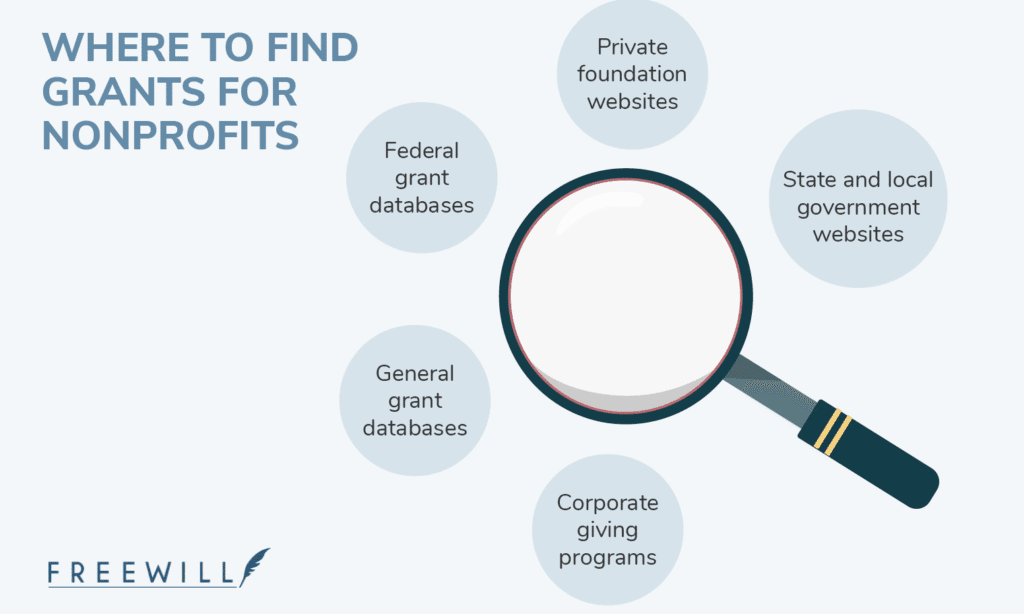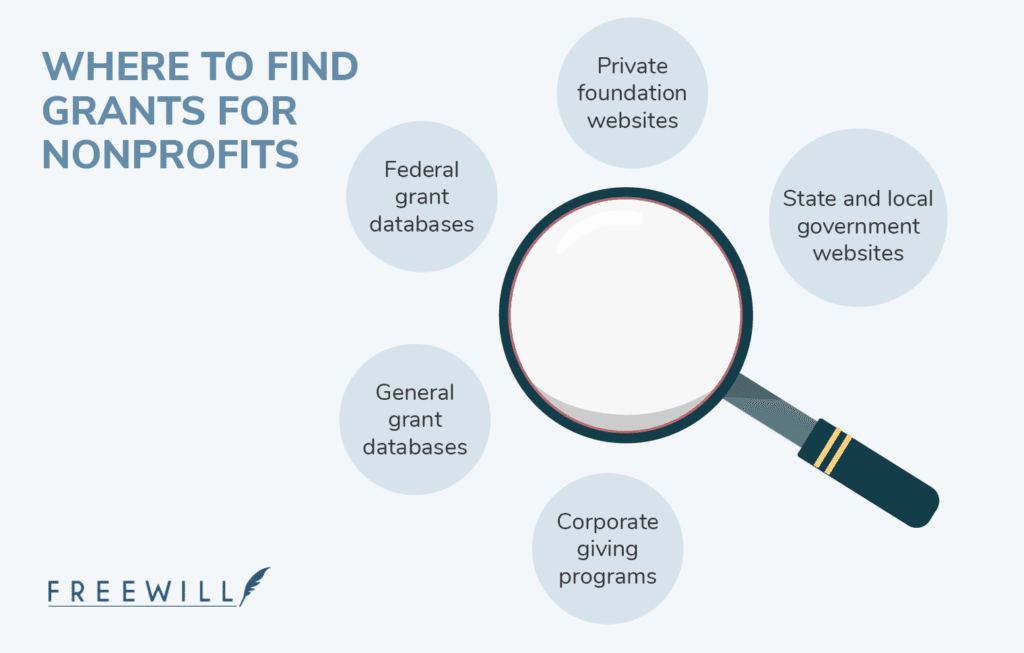
Nonprofits and the Assassination of Charlie Kirk
September 14, 2025
[PODCAST] Being Human at Scale: The Key to Digital Fundraising Success – Greg Colunga and Courtney Krus
September 25, 2025From Research To Reporting: Strengthening Your Grant Cycle

From Research To Reporting: Strengthening Your Grant Cycle
What if your nonprofit’s grant cycle ran like clockwork? What if your team knew exactly what to do at every stage, deadlines never crept up, and funders were so impressed that they couldn’t wait to work with you again? That’s not a pipe dream — it’s what happens when you intentionally strengthen each step of your grant cycle!
Finding, applying for, and managing grants can be a lot to juggle, but when you break it down and focus on each stage, your process can go from stressful to smooth, proactive, and rewarding. Let’s walk through how to optimize your entire grant cycle, so your team can confidently win and manage more funding.
1. Research and Grant Identification
Before diving into opportunities and writing a grant proposal, pause to define your ideal funding opportunity. Clarity here will save your team hours of wasted effort and increase your chances of success. Sit down with your team and define these elements:
- Priorities: Which programs or initiatives are most important for us to fund right now?
- Funding range: How much money do we realistically need to support this program or initiative fully?
- Organizational fit: Which traits (mission, geography, structure, capacity) should guide which grants we consider?
- Relationship potential: What kinds of funder relationships would be most valuable for us to build in the long term?
With this in mind, kick off your search! Remember, the goal of this stage isn’t to find every grant you could apply for. Instead, you want to find the ones you’ll most likely win. FreeWill’s guide to finding nonprofit grants suggests checking these resources:

- General grant databases (like Candid and GrantWatch) that compile opportunities from various government foundations, government programs, and corporations
- Federal grant databases (like Grants.gov) that list grants from federal agencies
- State and local government websites that feature opportunities related to regional needs and priorities
- Private foundation websites that list their own opportunities, typically focused on specific cause areas
- Corporate giving programs on individual company websites
As you explore opportunities, see who the funder has supported before and try to identify trends in their support. Do they focus on specific issues or populations? If they frequently fund causes like yours, you might be more likely to win their support!
Through your research, you’ll be able to gauge your chances and narrow down your options. Overall, treat grant research as strategic matchmaking to save time and focus your energy on the best opportunities.
2. Relationship-Building With Grantmakers
Finding a promising grant opportunity is only the start. In this stage of the grant cycle, you need to build connections to turn a good prospect into a successful partnership! While cold applying can work, your application will stand out more if you already have a relationship with the funder.
Funders are people, too. They want to know that you understand their priorities, share their values, and can deliver on your promises.
To build these relationships, you might:
- Attend funder-hosted events and webinars to learn about their priorities.
- Reach out with a warm introduction and ask smart, specific questions about the funding opportunity.
- Show up to conferences or community events that funders frequently attend to start conversations.
- Invite grantmakers to your nonprofit’s events or facilities so they can see your mission in action.
- Set up a meeting to learn more about their goals and how your work aligns.
When you find a grant that seems like a good fit, have a short checklist ready. That might include researching their priorities, then following up with a call or meeting to learn more.
Think of these initial touchpoints as laying the foundation before you start construction. A little effort up front makes everything else stronger!
3. Application and Proposal Writing
Your application is where you get to show off all the hard work your nonprofit does. A well-written grant proposal tells a story that connects your mission to the funder’s priorities and is backed by clear evidence. Your goal here isn’t to impress with complexity, but to make it clear that your nonprofit is the right choice. You want to make the funder believe in your nonprofit’s work.
Optimize this stage of the grant cycle by:
- Following the guidelines exactly. Every requirement counts. Pay attention to word limits, formatting, and required attachments to ensure your application will be properly processed by the funder.
- Customizing your proposal for every funder. Chances are, most of your content is reusable, like your mission statement, budget, and program descriptions. However, you should still customize your introduction, goals, and other sections to reflect the funder’s stated priorities and past giving.
- Pairing data with stories. Strengthen your proposal by connecting your numbers to real people and outcomes. While data builds credibility, stories create emotional connections.
- Building in multiple review steps. Plan for at least one content review (checking alignment and persuasiveness) and one compliance review (checking guidelines, attachments, and formatting). Multiple eyes on your proposal will help catch mistakes.
Purpose-built AI grant writing tools can take a lot of the stress out of this stage. For example, use it to draft sections based on your notes, organize your content, and even generate document summaries. Instead of starting with a blank page, AI can help create a strong first draft. Then, you can focus on revising the content and adding personal touches that make your proposal stand out.
4. Award, Agreement, and Implementation
Even if a funder rejects your proposal, it doesn’t have to be the end of the relationship! Within a week or two of receiving the decision, thank the funder for considering your proposal and ask if they can share why it wasn’t selected. It’s worth documenting what worked and what didn’t so your team can build on the experience the next time. Remember, rejection doesn’t mean “never.” Stay in touch by attending the funder’s events or applying for future opportunities.
If your application is approved, that’s worth celebrating! Let your team know, and call the grantmaker or send a personal thank-you email. Now, you need to turn the award into a well-managed project that meets every obligation.
Start by reviewing the grant agreement in detail. Go beyond the budget by looking at the fine print on eligible expenses, reporting requirements, and timelines. Now is the time to clarify anything that’s unclear with the funder before you start spending. Once you’re confident in the terms, share the key points with your internal team so everyone knows what’s expected.
With the groundwork in place, move into implementation. Break down the funded project into clear tasks, milestones, and budgets. Monitor your progress regularly so you can address challenges early rather than scrambling near deadlines. Keep your funder in the loop with proactive updates. Even a quick email to share a win or flag a change in plans can build trust and goodwill!
To keep things on track, it helps to:
- Document deadlines and deliverables in a shared calendar or project management system.
- Assign clear roles for compliance, reporting, and record-keeping.
- Hold regular internal check-ins to track spending and project outcomes.
- Capture stories and data as you go, so reporting later is faster.
Your grant management platform can help you meet every obligation, so nothing gets lost in the mix. When you have an organized approach to award management, you’ll show funders that you’re a reliable partner and set the stage for future opportunities.
5. Reporting and Stewardship
The final stage of the grant cycle is to strengthen relationships, laying the foundation for future funding. Clear, timely, and engaging reports show funders that you deliver on your promises and value their support.
Remember, you should review the reporting requirements as soon as your project begins. This way, you can track the exact metrics you’ll need as you go.
This grant compliance guide from Thompson Grants recommends these best practices for stronger reporting:
- Verify each expense before processing and reporting it to confirm it complies with the grant agreement’s stipulations.
- Follow consistent documentation practices to create complete, error-free reports.
- Submit all reports on time to maintain compliance.
Depending on the frequency of your reports, you might set up a shared dashboard or even automatic reports. The right nonprofit technology can make reporting a breeze by centralizing data, tracking progress in real time, and generating visuals that show impact.
Outside of your reports and initial post-award thank-you message, take extra steps to cultivate a relationship with the funder. This can include sending periodic updates on progress, inviting them to site visits or events, and sharing media coverage that highlights your work.
Funders remember organizations that treat them as partners, not just check writers. That goodwill can open the door to renewals, larger awards, or even introductions to other funders. This becomes even more valuable when facing tight resources and funding uncertainty.
Overall, approach reporting and stewardship as an ongoing conversation, not a one-time requirement. Doing so will help turn the last stage of the grant cycle into the first step of your next success.
Make Your Grant Cycle Work For You
A strong grant cycle doesn’t happen by accident. It comes from having a clear approach to every stage, creating a sustainable foundation that fuels your organization’s impact for years to come. From researching top opportunities to delivering compelling reports, make sure you’re prepared to show funders that you’re organized, capable, and committed to your mission at every stage.
The post From Research To Reporting: Strengthening Your Grant Cycle appeared first on Nonprofit Hub.
